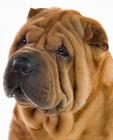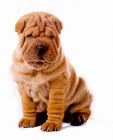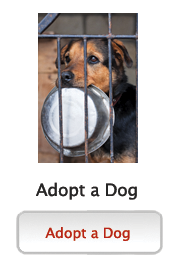Sharpei
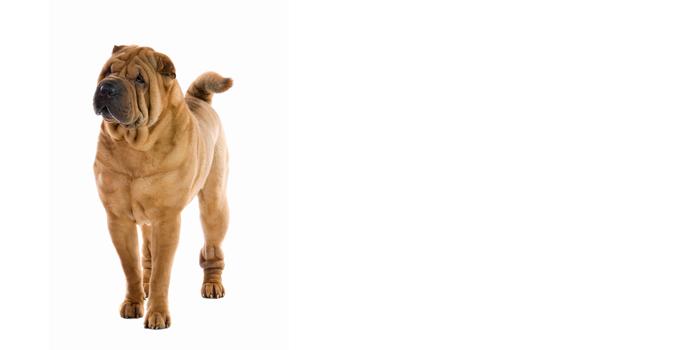
In my own words
I know I’m a wrinkly old pooch. My features are admired for their distinctiveness. Just take a peak at my blue-black tongue. As a puppy I had even more wrinkles but now I’ve matured a little I have semi grown into my skin. I came from China. My English name probably derived from British spelling of the Cantonese equivalent, sā pèih it translates to "sand skin". Pretty appropriate hey? My owner was allergic to my skin, she had a rash on her forearm but it went quite quickly. It’s true my coat requires a lot of maintenance and that I just can’t stand water. I am one of the rare dog breeds around. I’m pretty popular in China but not found in many other districts. I was originally bred as gladiators in the pits for entertainment at night and for hunting, herding and protecting during the day. And also as a delicacy! Today I am simply a companion and seen in the show ring.
My ideal owner(s)
City Dwellers
Families
Singles
Those who live in hot climates
What they say about me
Wrinkled
Strong-willed
Affectionate
Loyal
Please read on, to find out more about me, and whether I will be someone you can be happy with for the next 12 years, or even longer!
Is this Sharpei for you?
Test your knowledge about the Sharpei
Information essential about the Sharpei
Kennel Club Group: Utility
Category:
Size:
Weight: Male, 55 to 65 lb (25 to 29 kg) – Female, 40 to 55 lb (18 to 25 kg)
Height: Male & female 18 to 22 in (46 to 56 cm)
Popularity:
Although Shar peis spent many centuries thriving in China, they almost became extinct when the People’s Republic of China was established and the dog population was practically eradicated. It was through the efforts of a dedicated Chinese businessman from Hong Kong, Matgo Law, that the breed was saved and introduced to America in the 1970’s.
Breed History:
The Shar Pei breed comes from the Guangdong province of China. The original Shar-Pei from China looked very different from the breed now popular in the West. People in southern China, Hong Kong, and Macau differentiate the Western type and the original type by calling them respectively 'meat-mouth' and 'bone-mouth' Shar-Pei.
The ancestry of the Shar-Pei is uncertain. It may be a descendant of the Chow Chow. However, the only clear link between these is the blue-black tongue. However, pictures on pottery suggest the breed was present even in the Han Dynasty (206 BC). A statue on display at the Boston Museum of Fine Arts dating from the second century A.D. depicts a dog that strongly resembles a modern Shar Pei. For many years, the Shar-Pei was kept as a general-purpose farm dog in the Chinese countryside, used for hunting, protecting and herding stock and guarding the home and family. During that time, the Shar-Pei was bred for intelligence, strength and its scowling face. Recent genetic research has suggested the Shar-Pei is one of a few ancient dog breeds, believed to have split from common ancestors earlier than other breeds.
Later, it was used for dog fighting. The loose skin and extremely prickly coat were developed originally to help the Shar Pei fend off wild boar, as they were used to hunt. Dog fighters used these enhanced traits to make the Shar-Pei difficult for its opponent to grab and hold on to, and so that if it did manage to hold on, the Shar-Pei would still have room to shift and bite back. Their most intriguing feature, in this respect, is that if one grabs them by any loose wrinkle, they can actually twist in their skin and face in one's direction. This trait was used in fighting as a means for them to fight back; they would be bitten and twist in their skin to bite back at the offender. During the Communist Revolution, when the Shar Pei population dwindled dramatically dogs were rescued by a Hong Kong businessman named Matgo Law, who appealed to Americans in 1973 through a dog magazine to save the breed. Around 200 were smuggled into America. The current American Shar Pei population stems mainly from these original 200. DNA analysis has concluded that the Shar Pei is one of the most ancient dog breeds
Character:
The Chinese Shar-Pei is a unique and intelligent dog most often recognized for its wrinkles. All Shar-Pei need early socialization with children, strangers, and other animals. Like other fighting breeds, they can be stubborn, strong-willed and very territorial. Early training can help control these traits before they become problem behaviours. They will be fine with cats if they have been introduced to them when puppies but there can be problems mixing with other dogs. They love being indoors and hate the cold.
Temperament:
The Shar Pei is often suspicious of strangers, which pertains to their origin as a guard dog. It is a very independent and reserved breed. Nevertheless, the Shar Pei is extremely devoted, loyal and affectionate to its family and is amenable to accepting strangers given time and proper introduction at a young age. If poorly socialized or trained, it can become especially territorial and aggressive. Even friendly and well-socialized individuals will retain the breed's watchdog proclivities (such as barking at strangers). It is a largely silent breed, barking only when playing or when worried. The Shar Pei was originally bred as palace guards in China. The breed is amenable to training but can get bored from repetition. Overall, the Shar Pei can be a dog that is loyal and loving to its family while being very protective and independent.
Conformation:
Initially developed for Chinese farm and hunting and later a fighting dog, the breed does well today in obedience, agility, herding and tracking, with skills that would have been needed on the farm. Because the name Shar-Pei means "sand coat", harshness is a distinctive feature in its two accepted coat types, either horse (short) or brush (up to an inch long). Other unique qualities include black mouth pigment, a slightly "hippo-like" head shape, small ears, deep-set eyes and rising top-line.
Horse-coat (unusual but regaining ground), rough to the touch, extremely prickly and off-standing, soft in one direction and harsh in the other; Brush-coat, with longer hair and a smoother feel; and Bear-coat (rare, and not recognized by the AKC; Bearcoats are not due to the addition of other breeds), Bearcoats were actually the part of the breed owned mostly by wealthy aristocrats in China prior to Mao's cultural revolution and the first to be exterminated by the regime for being considered bourgeois. The shorthaired examples of the breed were owned by the peasant class, and were used for working dogs and fighting due to their loose skin. Bear coats can be seen in Chinese art throughout history, and are considered to be one of the oldest breeds on earth.
There is a type of Shar Pei called "traditional" that is most popular in china and that is more faithful to the history of the breed. If a Shar Pei is being attacked the wrinkles will allow the dog to move and strike back while being bitten and keep the internal organs from being injured badly.
Shar Peis are easily recognisable by the loose folds of skin on their bodies and their ‘frowning’ expressions. They are squarely built and short-coupled and look powerful with good bone. They are a compact, square, muscular dog with a blocky head that brings a hippopotamus to mind, blue-black tongues, tiny ears that lie against the head, and a short, curled tail.They are balanced dogs that should move freely and vigorously. Their coat is also a distinctive feature of the breed: it is short and bristly and harsh to the touch. Whilst it is straight and standoffish on the body, it is flatter on the limbs.
Colour:
The Shar Pei exhibits solid colours of black, red, light or dark shades or fawn and cream and can be shaded on the tail and the back of the thighs with a lighter colour.
Training:
Whilst highly intelligent, this breed does need consistent training and a confident handler. It will reverse roles if you are too soft, too uncertain or too inconsistent. The Shar Pei needs a firm, but gentle, extremely consistent authority figure. The dog must be taught all humans are above him in the pecking order. Those who see themselves as above humans will be stubborn and bold. This breed needs firm obedience training to establish your leader-ship. They are very easy to house break as they are naturally very clean.
Care:
The folded skin of this breed needs a lot of attention to keep it in good condition, and stop skin problems developing. Some lines have very close-set tails and these must be inspected and cleaned to prevent infection. Shampoos must be chosen with care and, as the nails grow very quickly, must be trimmed regularly. The eyes as well should be inspected daily. The coat itself just needs a going over with a soft brush.
They do need exercise, but enjoy playing as well as running and walking. They will need daily walks to keep them happy and healthy. Care must be taken when they are off the lead and a well-enclosed area/garden is a must. Shar Pei do not like to get wet, and bad weather may well put them off going out. As Shar Pei are sensitive to heat exercise should be undertaken in the cooler parts of the day and shade and fresh water should be available at all times.
They are quite expensive to keep as quality food should be used, although the protein levels should not be high. From 6 months of age, they should be fed adult food.
Health:
Due to its fame after being introduced to North America in the 1970s, the breed suffered much inexperienced or rushed breeding. This resulted not only in a dramatically different look for the Shar Pei (as its most distinctive features, including its wrinkles and rounded snout, were greatly exaggerated) but also in a large number of health problems. Allergy-induced skin infections can be a problem in this breed. Familial Shar Pei fever (FSF) is a serious congenital disease that causes short fevers lasting up to 24 hours, usually accompanied by accumulation of fluid around the ankles (called Swollen Hock Syndrome). These fevers may or may not recur at more frequent intervals and become more intense. Amyloidosis, a long-term condition, is most likely related to FSF, caused by unprocessed amyloid proteins depositing in the organs, most often in the kidneys or liver, leading eventually to renal failure. There is no early test for FSF, but as it is congenital, the dog is either born with it or without it, and if one attack occurs (usually brought on by excessive emotional or physical stress), the dog will always be susceptible to another. With proper care, a Shar Pei with FSF can live a completely normal and long life.
The disease is associated with the western type and it is estimated that 23% are affected. The Australian breed standard was changed in 2009 to discourage breeding for heavy wrinkling.
A common problem is a painful eye condition, Entropion, in which the eyelashes curl inward, irritating the eye. Untreated, it can cause blindness. This condition can be fixed by surgery ("tacking" the eyelids up so they will not roll onto the eyeball for puppies or surgically removing extra skin in adolescent and older Shar Pei).
The Shar Pei is also prone to chronic yeast infections in its ears. This is due to the tight "flap" that the ear creates over the canal, allowing a moist environment. Vitamin B12 deficiency is a common problem in the Shar Pei and is suspected to be hereditary. They are expected to live from 8 – 10 years and their average litter is 5 puppies.
You may also like:
If you like Sharpeis, you may be interested in breeds of the same size »
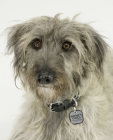
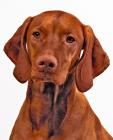
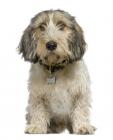

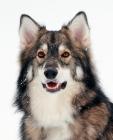
If you like Sharpeis, you may like other breeds with similar characteristics »
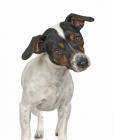
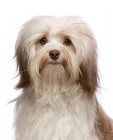
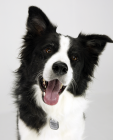
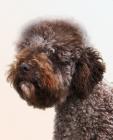
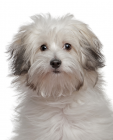
If you like Sharpeis, you may be interested in these other utility dogs »
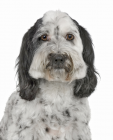
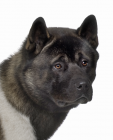
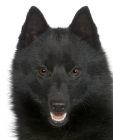

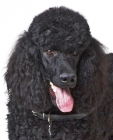
Advice on choosing your breed »
Find an animal shelter or rescue home where a Sharpei is waiting for a new home »
The following grid gives a fast track review, which covers all breeds. You can apply it to help you decide if a Shar pei is suitable for you, the environment where you live, your personality and your lifestyle. On the grid, 1= strongly disagree, and 5= strongly agree. For example, if you are looking for a dog to make a good walking companion, look down the list under ‘Activities’, and you will see that Shar pei have lots of energy and are strong walkers, scoring 5. If you want a dog that is good for country living, look under ‘Environment’ and you will see that Shar Pei are suited to country living, scoring 5. You might like to save or print off this section and keep it for reference while you check some other breeds before making your final choice.
Be the first to rate this breed »
|
*PLEASE NOTE: All our breed profiles are general, and all dogs are individuals. Always talk to the breeders and meet the owners you are buying from. Try to meet the dog and its parents if it is a puppy in their home environment.








